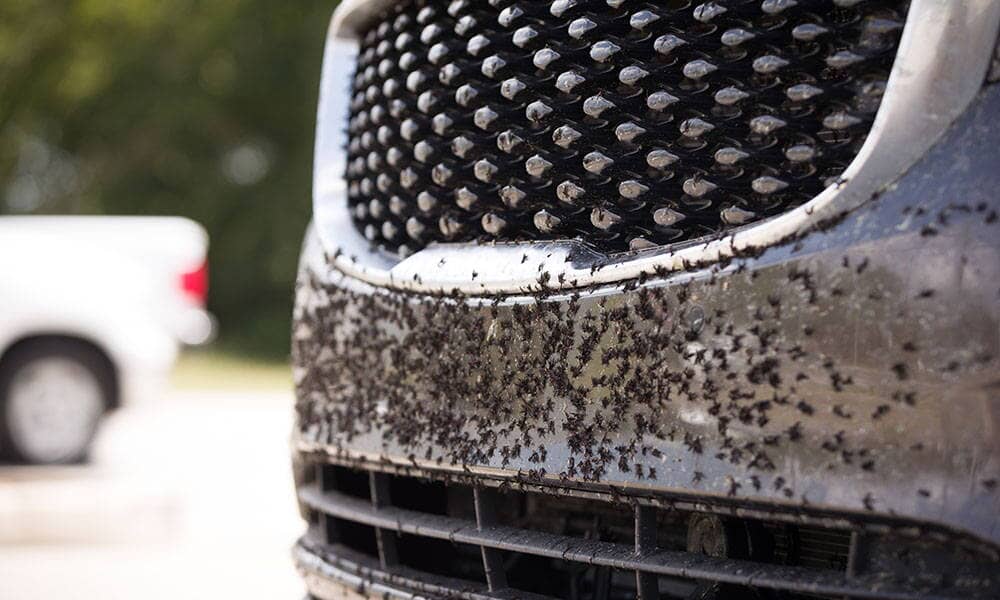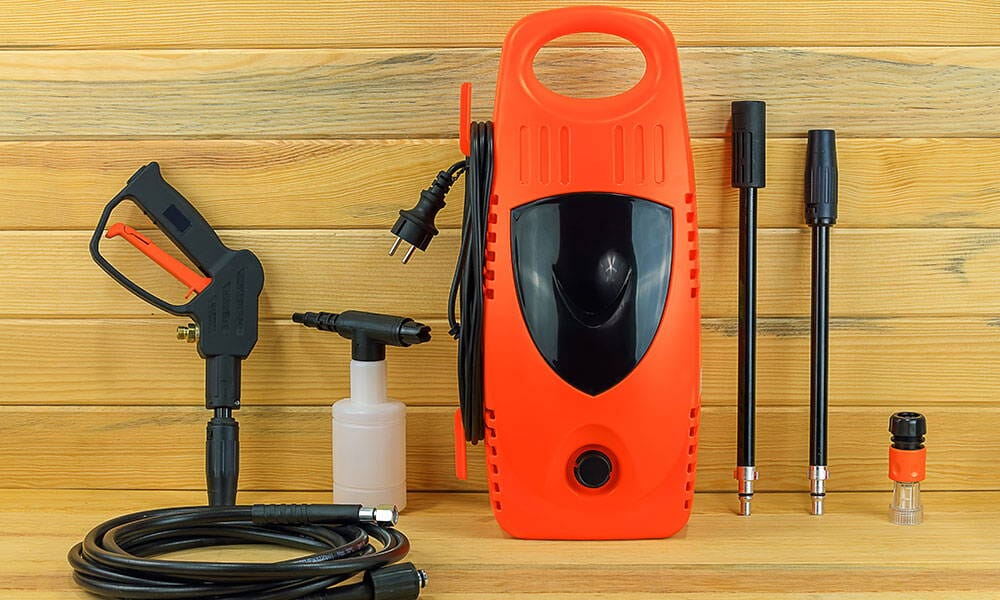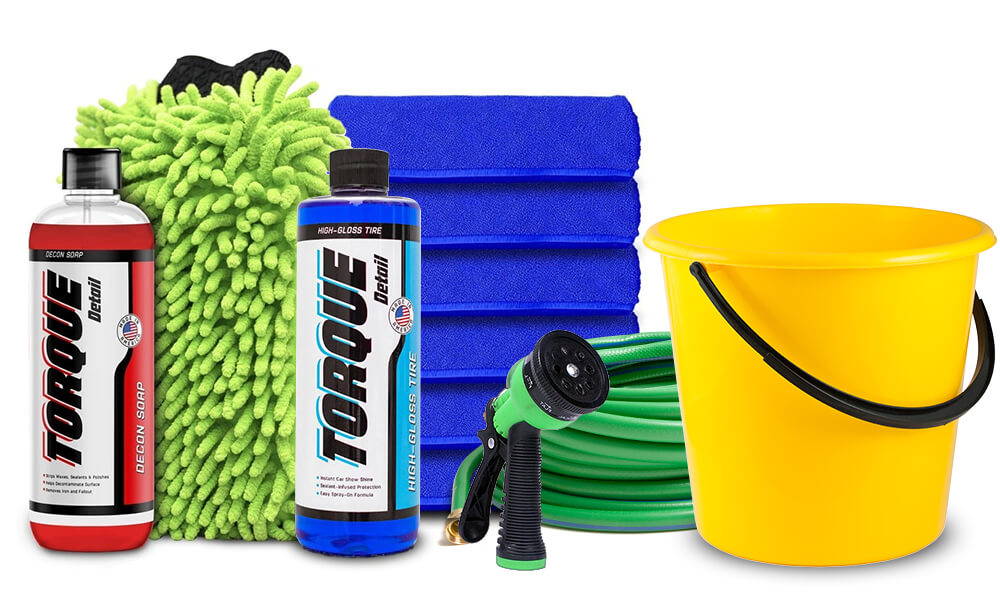Your car's paint has to deal with a lot of environmental hazards like snow, dust, tar and rain to name a few, but probably the most irritating are bugs! Bug guts are some of the most frequent types of contamination on your vehicle and also some of the more difficult to remove. Lucky for us there are ways to deal with the not so lucky dead bugs that end up on our cars with a bit of elbow grease!
Turbo is our anti static waterless car wash and quick detailer with ceramic. It helps enhance the longevity of Mirror Spray or Ceramic Spray and applies easily anywhere, anytime. You'll get high gloss shine and hydrophobic shine. Great for touch ups in between traditional car washing or as a waterless wash. The anti-static feature is well loved by supercar owners because dust and dirt stays off.
★★★★★ "Never bringing out the hose again. I use this every few days to remove dirt and debris from my car. Definitely prevents dirt from clinging to the coat. Awesome product." - Lewis R.
Why Does My Car Pick Up So Many Dead Bugs?
The amount of bug remains you encounter will all depend on the region you're traveling in and if it’s bug season, similar to bird droppings and tree sap which are dependent on the environment. A great example would be the Infamous Love bug, if you’re traveling through Texas during late spring or early fall you’ll encounter their regular mating migration, so that means a lot of bug guts during your family road trip! Bug migrations, locations, and the time of year you're traveling are the three biggest factors associated with how much cleaning you have to do after you get home from your trip.
Why You Have to Clean Bug Splats Within 24 Hours
You will want to remove dead bugs, not only are bug guts an eye sore they are also very harmful to your vehicle and car windows. If you remember your highschool chemistry class, you probably learned that every aqueous in other words liquid solution has a PH level. The PH level is a number system that tells us if a solution is acidic, neutral, or alkaline. The lower the number the more acidic, the higher the number the more alkaline. For example lemon juice has a PH level of 2 while your average degreaser is around 12, if you combine those two numbers you’ll find their median average of 7 which is considered neutral on the PH scale. Most bug guts are very low on the pH scale, so they would be considered very acidic. Even the bugs guts that are alkaline or pH natural can become acidic when left in the sun for too long. Acid as we all know is very harmful and can cause major damage to your vehicles surfaces, in the case of bug guts we would refer to this damage as bug etchings.
When it comes to a cleaning solution for bugs, within the first 24 hours the acid from the bug spater can be at its strongest, rapidly eating away at your clear coat. If your car is left out in the sun the heat can speed up the etching process cousin permanent damage in a few hours. This damage can be very difficult, in the most extreme situations requiring sanding and advanced paint job correction performed by professional detailers.
The Science Behind Bug And Tar Removers
Because most instances of bug guts are acidic, automotive bug removers found on the market are alkaline based. This is because alkaline based cleaners are effective in not only removing bug guts but also neutralizing them in the process. Tar is another thing you might encounter on a long road trip, typically a mix of hydrocarbons and petroleum oil products, if left on too long, tar can stain materials around your vehicle. Luckily there are degreasers on the market that contain solvents such as mineral spirits that break down tar deposits on your vehicle making them easy to clean.
The EASIEST Way to Clean Off Bug Guts Off Your Car’s Paint (Guaranteed)
Let’s go over some super easy ways to remove pesky bug guts without buying specialised remover products, available at an auto parts store!
Step 1.) See What You Can Get Off With Just a Hose and pressure washer
Sometimes all you need is a little bit of warm water! Use your garden hose or even better a pressure washer to push off as many bug guts as possible. Sometimes the pressure is just enough to safely and easily clean up most the bug guts on your vehicle. Adding some car soap or dish soap in the mix will also help soften the bug guts making them easier to clean but also neutralize any left over acid from the bugs.
Step 2.) Use Turbo Waterless Detailer
Now here is something that I recommend every car owner to have tucked away in their glove box, a bottle of Torque Turbo Waterless Detailer. Torque Turbo Waterless Detailer is a high polymer based waterless wash that safely encapsulates things like dirt, dust and bug guts. Just spray the bug guts with the waterless detailer, let it sit for a few moments, then wipe down with a fresh microfiber towel. You might have to repeat these steps once or twice, but this product will safely remove the dirt and grime while adding gloss and shine.
Testing Bug Removal Products & DIY Methods: Which Work?
Because there are so many options on the market for a car wash let’s go over the basics and some DIY methods.
A Basic First Step: Wash the Vehicle First
Washing your car is a great option to start with because the wash processes will remove heavy dirt and bug guts from your car with ease. We recommend using a pressure washer, with Torque decon soap along with two buckets. The decon soap has the perfect amount of detergent cleaners in order to break down most of the bug guts from your paint, glass, and plastics. The two buckets will allow you to rinse off the bug guts from your wash mitt giving you a clean wash mitt after every pass. After washing your vehicle rinse off the leftover soap and bug guts with a strong stream from your garden hose or your pressure washer.
All Purpose Cleaner and Bug Sponge
Sometimes even a high quality wash can’t take care of harsh bug guts, so an all purpose cleaner alongside a bug sponge can work well. Now this is for more extreme situations because most all purpose cleaners are strong and can damage areas of your vehicle if left on too long. Spray some water on the area you're working on then spray a good amount of APC on your bug sponge. After your sponge is soaked with APC lightly scrub the affected area until the bug guts are removed. Remember rubbing anything on the surface of your paint with too much pressure can scratch, so make sure to take your time and be gentle with the bug sponge. After the bug guts are removed make sure to rinse off the remaining all purpose cleaner with a garden hose or a pressure washer.
Does Gas or Kerosene Work?
Time to go over some DIY methods like Gas, Kerosene, and WD-40. Many people are curious if methods like these work since almost everyone has a bottle of WD-40 or Gas on hand. To keep it simple, yes these methods do work in a pinch but we do not recommend using them. The reason being chemicals like gas, kerosene and WD-40 have not been developed or tested on car paint and or plastics, so they could very much damage your vehicle if used too frequently or used at all. Furthermore products like Kerosene and WD-40 contain oils and lubricants that attract dirt and grime to your vehicle, making it sticky and difficult to clean afterwards. So all in all, yes these products might work but the negatives very much outweigh the positives.
Turbo is our anti static waterless car wash and quick detailer with ceramic. It helps enhance the longevity of Mirror Shine or Ceramic Spray and applies easily anywhere, anytime. You'll get high gloss shine and hydrophobic shine. Great for touch ups in between traditional car washing or as a waterless wash. The anti-static feature is well loved by supercar owners because dust and dirt stays off.
★★★★★ "Never bringing out the hose again. I use this every few days to remove dirt and debris from my car. Definitely prevents dirt from clinging to the coat. Awesome product." - Lewis R.
Using Dryer Sheets?
Dryer Sheets are another popular DIY method to remove bug splatter from your car. All you have to do is fill a spray bottle with water then place a dryer sheet inside the water and shake it up. The spray the solution on the bug guts and using another dryer sheet rub on the soaked surface until the bugs are removed. The process is pretty simple and does deliver easy results, but please keep in mind that the chemical detergents in dryer sheets are not made or safe for automotive surfaces, so just like the previous gas, WD40, kerosene DIY methods we do not recommend using dryer sheets to remove bug guts.
Bug and Tar Remover
Dedicated bug and tar removers do a great job at removing bugs because they're made for it! If you remember from our previous section bug guts are acidic, while purpose made bug removers are solvent or alkaline based so they effectively remove bug guts and neutralize leftover acid. Bug and tar removers are pretty easy to use, but everyone is a bit different, so make sure to follow instructions if they differ then ours. Just spray the bug remover on the effective area and let it sit for a few moments, then using a microfiber cloth wipe the area clean. After the bug splatter is removed, we like rinsing the area with some water then applying some protection. In our experience Most bug and tar removers are pretty strong and like to strip off car waxes and sealants. So it's always nice to put a fresh layer of protection after the bug guts are removed.
How to Remedy Chemical Etchings From Bug Splatter (Bug stains)
Sadly most people leave bug guts on their vehicle’s paint for too long in the first place, that combined with heat from the sun, causes the acid from bug guts to eat its way through your clear coat. Most of the time this type of damage is permanent but if you're lucky you might be able to remove the etching by leveling the surface through a process we call paint correcting or otherwise known as polishing.
The polishing process starts with a clean surface, so make sure to wash your vehicle or at least clean the affected area with a waterless wash like Torque details Waterless Detailer. We also recommend that you clay the paint to remove any embedded contamination, check out our article… taking you step by step on how to clay your car's paint. After your paint has been cleaned and clayed apply a small drop of polish on to an applicator pad and buff the etching in overlapping circular motions using medium pressure. After 8 to 10 passes remove the excess polish with a fresh microfiber towel and check your work. Repeat the process until satisfied, but please do remember that if the etching is too deep, no amount of polishing can remove it.
The best thing to do for your car is to protect it before permanent damage like bug gut etchings occur, we recommend using something like Torque Details Ceramic Spray. Ceramic Spray is a spray on ceramic coating that provides your paint a ceramic shield. This shield of ceramic protection helps prevent your vehicle from etchings, keeps your car cleaner longer, and makes it super easy to clean. Please do remember even if you ceramic coat your car’s paint it doesn’t make it invincible to bug etchings. We still recommend cleaning off the bug spalter with our recommended methods before it eats its way through your ceramic coating and reaches your paint. We always recommend keeping a bottle of Turbo Waterless Detailer and Ceramic Spray in your car so when the bug splatter does eventually happen you can safely clean it and then easily replenish your protection as needed at home or on the go!
Turbo is our anti static waterless car wash and quick detailer with ceramic. It helps enhance the longevity of Mirror Shine or Ceramic Spray and applies easily anywhere, anytime. You'll get high gloss shine and hydrophobic shine. Great for touch ups in between traditional car washing or as a waterless wash. The anti-static feature is well loved by supercar owners because dust and dirt stays off.
★★★★★ "Never bringing out the hose again. I use this every few days to remove dirt and debris from my car. Definitely prevents dirt from clinging to the coat. Awesome product." - Lewis R.
Wrapping it up
Bugs are everywhere, but lucky for us we have products like ceramic coatings which help prevent bug guts from sticking on your car or even etching into your paint, this will help your car care. When bug guts do splatter on your car don't stress, just pick one of our many easy to follow methods to remove bug guts and then dry your car before they cause permanent damage to your paint, and remember using home remedies like WD40 and dryer sheets can result in other issues. So make sure to pick a quality bug gut remover or just hand wash your car!







